https://ospreypublishing.com/thisweekhistory/
Załadunek wojsk inwazyjnych w Wielkiej Brytanii, 4 czerwca 1944 r.
Extracts from The D-Day Companion.
The Key Role of Intelligence and Double Agents
The factor which above all else ensured both OPSEC and the success of the deception effort as a whole was intelligence. The role that intelligence played in the success of D-Day should not be underestimated, and it contributed in a number of ways. First, counter-espionage by MI5 had led to the imprisonment or turning of all of Germany’s operatives in Britain by the time of D-Day. MI5 had set up a special branch in mid-1941 to deal specifically with counter-espionage, and its efforts were made easier as the war progressed, as the various British intelligence agencies penetrated their opposite numbers in Germany and British intelligence broke German signals ciphers (particularly significant of which was the breaking of the so-called ENIGMA codes, used by the German Services). MI5 was also approached by a number of non-British nationals wishing to work for British intelligence as agents. By the beginning of 1944, MI5 had 15 double agents, and these fed carefully crafted misinformation into the German military intelligence apparatus, known as the Abwehr. The ‘Double-Cross’ agents were invaluable for reinforcing the physical deception measures. The secret of their success in the overall BODYGUARD deception can be attributed to the fact that most had been working as double agents since the early part of the war and were, therefore, trusted by their Abwehr controllers. To have double agents of such long standing was not without its dangers. In order to maintain their credibility, agents had to provide just enough information to keep them in the Germans’ employ. A certain amount of sensitive material had to be leaked to the Germans, typically information on size or disposition of forces, shipping movements, etc, which the Germans could corroborate using their own means.
Within the ‘Double-Cross’ system, three agents in particular were vital to British intelligence. The most celebrated was given the codename of ‘Garbo’. This was the Spanish-born Juan Pujol. Motivated by liberal ideals, he approached the British Embassy in Madrid as early as 1940, but his offer to work for British intelligence was at first rejected. He then convinced the Abwehr that he could work for them, and it was after a year of working for the Germans that MI5 and MI6 realised his value. The most notable feature of Garbo’s double-cross was that he created a network of fictitious agents, numbering 24 by D-Day. The benefits of having such a fictitious network were considerable. The imaginary sub-agent could be created to meet any requirement; he had no true family or work history which could be scrutinised by the enemy (and Garbo made their existence more believable by saying to his German handler that he never divulged sub-agents’ names as this would put them at risk of compromise!). One of Garbo’s sub-agents was manufactured specifically to support the idea of an invasion threat to the Calais area of the French coast. This was supposedly an ex-seaman, who was ‘tasked’ by Garbo to report on Allied shipping around the south and south-east coasts.
Among the other highly regarded double agents was the Polish officer Roman Garby-Czerniaski, codenamed ‘Brutus’. He had escaped to France after the German attack on Poland in September 1939, and set up an espionage network within France. Brutus continued to supply the Allies with important information on the occupying German forces until the end of 1941, when he and his network were betrayed to the Gestapo. After a period of incarceration, Brutus managed to convince his captors that he was a genuine convert to the Nazi cause, and he was sent to Britain as a spy. On his arrival in England, he immediately informed MI5 of his mission, and was recruited as a double agent in the FORTITUDE group. Like Garbo, he set up fictitious sub-agents, and contributed to both facets of FORTITUDE (North and South). His reporting on the ‘preparations’ for the attack on Norway was considered by the Germans to be particularly reliable, as he said that he was able to fraternise with a Polish contingent attached to the British 52nd Lowland Division, which was carrying out real exercises in Scotland.
The third double agent said to have made a vital contribution to the deception effort was a Yugoslav businessman, Dusan Popov, codenamed ‘Tricycle’. He had been recruited by the Abwehr in early 1940, and was sent immediately to England. The German High Command was busy preparing plans for the invasion of Britain, and Tricycle was tasked with reporting on the nature and strength of British defences, how much war materiel was coming into the country from North America, the state of the British public’s morale, and potential collaborators. However, Tricycle had already informed the British Embassy in Belgrade about his recruitment by the Germans, and he was brought into the fledgling ‘Double-Cross’ system. In 1944, he fed the Abwehr very detailed misinformation about the FUSAG deception.
Those who were involved in the planning and execution of FORTITUDE were to conclude that double agents were critical to its success, for while physical and communications deception were important, there was only one certain method of achieving strategic-level deception over a long period, and this was the double agent. As strategic deception is aimed at the enemy’s high command, the double agent’s direct feed to the Abwehr, in this case, could not be matched by any other means.
Amerykanin w zdobytym niemieckim stanowisku artyleryjskim – elemencie wału atlantyckiego
Fragment pływającego portu Mulberry w Southampton
Niemieckie ciężkie działa nadbrzeżne strzegące wału atlantyckiego, 1943 r.
Przeszkody przeciwdesantowe na normandzkiej plaży, 1944 r.
Feldmarszałek Erwin Rommel podczas inspekcji wału atlantyckiego, wiosna 1944 r.
Niemieckie działo kal. 88 mm ostrzeliwuje aliancki desant
Zamaskowany niemiecki tygrys pod Villers-Bocage, czerwiec 1944 r.
Premier Churchill w towarzystwie adm. Viana i wicehr. Alanbrooke'a obserwują wyładunek wojsk alianckich na przyczółku w Normandii
Zniszczony niemiecki radar Würzburg na plaży w Normandii
"
Amerykańscy dowódcy obserwują inwazję z pokładu USS „Augusta” – w środku gen. Omar Bradley, 6 czerwca 1944 r.
Alianckie okręty desantowe na „Omaha”, 6 czerwca 1944 r.
Amerykanie lądują na plaży „Omaha”,
Desant Brytyjczyków na plaży „Sword”, 6 czerwca 1944 r.
Amerykański sanitariusz bandażuje rękę rannemu żołnierzowi, plaża „Omaha”, 6 czerwca 1944 r.
Caen zniszczone przez alianckie naloty i ostrzał artyleryjski, lipiec 1944 r.
Amerykańscy spadochroniarze w St. Marcouf, ranek 6 czerwca 1944 r.
Wyładunek wojska i pojazdów amerykańskich przez sztuczny port Mulberry A przy plaży „Omaha”
Niemieccy wzięci do niewoli przez Kanadyjczyków lądujących na plaży „Juno”, 6 czerwca 1944 r.
Gen. Charles de Gaulle, szef Tymczaowego Rządu Republiki Francuskiej, na przyczółku w Normandii, 14 czerwca 1944 r.
‘Blood upon the risers’
The American Airborne Assault
The American airborne operation behind UTAH Beach by the 82nd Airborne and 101st Airborne divisions remains second only to the OMAHA Beach landing in near disaster. The excessive losses and general confusion are usually blamed on Air Chief Marshal Leigh-Mallory and the C-47 transport pilots, convenient scapegoats for Generals Bradley, Ridgway, and Taylor, a trio of senior officers consumed by ambition, peer rivalry, and an indecent desire to please the media and their superiors. The only airborne skeptic in the Normandy operation was Brigadier General Gavin, assistant division commander of the 82nd Airborne, who served as COSSAC airborne planner after commanding the 505th Airborne Infantry Regiment, the only combat-tested regiment in all the American airborne forces in England. Gavin watched one poor decision after another eventually ruin three American airborne regiments, two in his own division. He helped make the plans, too. Never have so many dropped in so small an area with so little purpose and so much loss. Only the fighting heart of younger officers and sturdy troops saved the operation.
The difficulty began with General Bradley’s decision, approved by General J. Lawton Collins of VII Corps, to use both American divisions at the base of the Cotenin Peninsula. Leigh-Mallory didn’t like the plan: too many gliders (almost 700 by the eve of D-Day), too much risk in isolation for the 82nd Division, out of range for naval guns and any 4th Division artillery. Leigh-Mallory might have committed USAAF tactical aircraft to inland targets in the drop zone, but he resisted any use of fighter-bombers in close air support, and the Americans, scared of “friendly fire” but unwilling to train to eliminate it, did not protest. Leigh-Mallory insisted that predawn glider operations be cut from 260 to 100 tugs and gliders and the evening waves from 400 to 200. Bradley made the change, and neither Taylor nor Ridgway objected. The final change the Americans accepted was to create three new drop zones for Ridgway’s division closer to those of the 101st Airborne, which made sense since both divisions would be short on anti-tank guns and howitzers, victims of the glider reductions. The battle would be borne by some 13,000 paratroopers of six airborne regiments wedged between the beach marshes and flooded Merderet River valley. There was a better option, but it required the cooperation of Maxwell D. Taylor, no friend of either Ridgway or Gavin, who regarded Taylor as a dilettante artilleryman of too much quick intelligence, great charm, sycophantic brilliance, questionable courage, and convenient ethics. Ridgway’s former chief of staff and division artillery commander, Taylor had escaped Ridgway’s wrath for inattentive work by promotion to brigadier general and a transfer, championed by Bradley, to the 101st Division. Taylor replaced Maj. Gen. William C. Lee in March, 1944 when Lee, the true airborne pioneer, collapsed from a heart attack. Taylor regarded Ridgway as a relentless egotist of limited intelligence, boundless energy, more physical courage than judgment, and a sanctimonious hypocrite who surrounded himself with dim-witted staff officers and commanders he manipulated through intimidation. Taylor may have excluded Gavin (who loathed him) from this characterization because he regarded Gavin – a poor orphan from coal-mining Pennsylvania who completed West Point without a high school education – as a social inferior. Taylor would accommodate Ridgway only as much as Bradley demanded. Fearing that internal battle would fuel Leigh-Mallory’s demands to scratch the whole operation, the airborne generals and Bradley stopped the operational adjustment with one change too few.
The adjustment untaken was the assignment of the 101st Airborne’s 502nd Parachute Infantry Regiment (PIR) to take causeway Exits Four and Three right behind UTAH Beach. Absorbed with training and buried in trivial matters his obsessive personality could not ignore, Ridgway did not propose one more logical change: shift the 502nd PIR to Exits Two and One to the south and use the proven 505th PIR to take Exits Four and Three, the 507th or 508th PIR to take Ste-Mère-Eglise and the Merderet bridges from the east bank, and the remaining regiment to hold the river’s western bank or concentrate at Chef-du-Pont, another east bank crossroads. As Ridgway doted on the 505th PIR, so Taylor regarded the 502nd PIR as “Max’s Own.” Its commander, Colonel George Van Horn Moseley, Jr., a general’s son, was mediocre and obliged everyone by breaking a leg just before he emotionally collapsed. His executive officer and replacement, Lt. Col. John H. “Mike” Michaelis, was a true warrior as were the three battalion commanders, Patrick Cassidy, Steven Chappius, and Robert G. Cole. Three, deservedly, became generals, but Cole died in Holland before learning he had been awarded a Medal of Honor. Taylor would not deny the 502nd PIR the best mission on D-Day.
In the face of Ridgway’s and Taylor’s demands to stage realistic parachute exercises, Bradley and Maj. Gen. Lewis H. Brereton, the Ninth Air Force commander, had no stomach for revising the airborne plan. Like a vulture at Agincourt, Leigh-Mallory hovered around the IX Troop Carrier Command, looking for fatal flaws. Taylor held to his high risk, high glory scheme unchallenged. Two of his regiments would open UTAH Beach while the third (the 501st PIR) drove south to take and hold a canal lock, bridge system, and road around the city of Carentan, key to the Douve-Taute and Vire River valleys and the roads to OMAHA Beach. This zone was the responsibility of the German 6th Parachute Regiment and the reinforcements it was likely to receive from LXXXIV Corps. The 501st PIR had the most demanding mission, but Taylor put one of its battalions in division reserve while the 506th PIR opened Exits One and Two, well south of the planned UTAH Beach. Basically, the division would put two regiments behind the beach and only one in the most menacing entrant to the battlefield. Moreover, the 4th Division’s scheme of maneuver would send it north, not to reinforce the 501st PIR.
‘With unbelieving eyes’
The Abwehr Predicts the Invasion
During the evening of June 5, 1944, a group of German military intelligence officers in Paris were sitting huddled around a radio listening to messages being broadcast by the BBC. There was an expectant tension in the air: the officers were waiting for lines from the poem “Autumn Song” by French poet Paul Verlaine. German military intelligence – the Abwehr – had recently interrogated a Maquis leader who knew how the Allies intended to alert the French Resistance to the impending invasion. Under torture he had revealed the truth: the alert would come in the guise of a two-part coded message contained in the lines of the Verlaine poem. Since then the radio intercept officers had learned the poem’s opening lines by heart. They had gasped when the BBC had broadcast the first line of the verse – “Les sanglots longs des violins de l’automne” – on June 1, indicating that the invasion was imminent. When they heard the second line “Blessent mon Coeur d’une langueur monotone” at 11:15p.m. on June 5, they exulted, since they believed that this information would help the Germans to defeat the Allied landings. Unfortunately, the Abwehr did not know precisely when and most importantly, where, the Allies would land.
The Abwehr headquarters immediately alerted all army, navy, and air force high commands in the West before midnight that the invasion was at hand. But at the palatial headquarters of Army Group B (tasked with defending northern and western France) at La Roche-Guyon, the information was received with derision. The notion that the Allies would announce the invasion on the BBC seemed preposterous to senior German commanders, and the warning was discounted as enemy disinformation. Only in the Pas de Calais – deemed the most likely invasion site by the German High Command – did the defending German Fifteenth Army go on high alert on the initiative of its commander, Generaloberst von Salmuth. Unknowingly, the Germans had already wasted the single most important piece of intelligence that confirmed the imminence of the Allied landings. The Germans threw away this early advantage, and no one in Normandy received the alert.
Further Reading
The best-selling and highly acclaimed D-Day Companion offers a unique and incisive examination of the momentous events that surrounded 6 June 1944, from the build-up to the attack to the experiences of the troops on the ground.
A set of four Campaign series titles – D-Day 1944 (1) Omaha Beach; D-Day 1944 (2) Utah Beach and the US Airborne Landings; D-Day 1944 (3) Sword Beach and the British Airborne Landings; and D-Day 1944 (4) Gold and Juno Beaches – examines the landings, beach by beach, providing an in depth analysis of the plans, commanders and armies involved.
Essential Histories 32: The Second World War (6) Northwest Europe 1944–1945 is the last in a miniseries examining the various fronts and theatres of World War II.
Warrior 56: US Infantryman in World War II follows one soldier as he is drafted in February 1941, trains with the 22d Infantry in the United States and then ships to England in January 1944, and Warrior 26: US Paratrooper 1941–45 focuses on the experiences of the elite US paratroopers who saw action in Operation Overlord, from training and recruitment to equipment and combat.
Combat Aircraft 35: Lancaster Squadrons 1944–45 details Bomber Command’s massive nocturnal bombing campaign, its support for the D-Day landings, Tallboy raids against the U-boat pens in France and the battleship Tirpitz in Norway, and the final daylight missions of 1945.
Załadunek wojsk inwazyjnych w Wielkiej Brytanii, 4 czerwca 1944 r.
Extracts from The D-Day Companion.
The Key Role of Intelligence and Double Agents
The factor which above all else ensured both OPSEC and the success of the deception effort as a whole was intelligence. The role that intelligence played in the success of D-Day should not be underestimated, and it contributed in a number of ways. First, counter-espionage by MI5 had led to the imprisonment or turning of all of Germany’s operatives in Britain by the time of D-Day. MI5 had set up a special branch in mid-1941 to deal specifically with counter-espionage, and its efforts were made easier as the war progressed, as the various British intelligence agencies penetrated their opposite numbers in Germany and British intelligence broke German signals ciphers (particularly significant of which was the breaking of the so-called ENIGMA codes, used by the German Services). MI5 was also approached by a number of non-British nationals wishing to work for British intelligence as agents. By the beginning of 1944, MI5 had 15 double agents, and these fed carefully crafted misinformation into the German military intelligence apparatus, known as the Abwehr. The ‘Double-Cross’ agents were invaluable for reinforcing the physical deception measures. The secret of their success in the overall BODYGUARD deception can be attributed to the fact that most had been working as double agents since the early part of the war and were, therefore, trusted by their Abwehr controllers. To have double agents of such long standing was not without its dangers. In order to maintain their credibility, agents had to provide just enough information to keep them in the Germans’ employ. A certain amount of sensitive material had to be leaked to the Germans, typically information on size or disposition of forces, shipping movements, etc, which the Germans could corroborate using their own means.
Within the ‘Double-Cross’ system, three agents in particular were vital to British intelligence. The most celebrated was given the codename of ‘Garbo’. This was the Spanish-born Juan Pujol. Motivated by liberal ideals, he approached the British Embassy in Madrid as early as 1940, but his offer to work for British intelligence was at first rejected. He then convinced the Abwehr that he could work for them, and it was after a year of working for the Germans that MI5 and MI6 realised his value. The most notable feature of Garbo’s double-cross was that he created a network of fictitious agents, numbering 24 by D-Day. The benefits of having such a fictitious network were considerable. The imaginary sub-agent could be created to meet any requirement; he had no true family or work history which could be scrutinised by the enemy (and Garbo made their existence more believable by saying to his German handler that he never divulged sub-agents’ names as this would put them at risk of compromise!). One of Garbo’s sub-agents was manufactured specifically to support the idea of an invasion threat to the Calais area of the French coast. This was supposedly an ex-seaman, who was ‘tasked’ by Garbo to report on Allied shipping around the south and south-east coasts.
Among the other highly regarded double agents was the Polish officer Roman Garby-Czerniaski, codenamed ‘Brutus’. He had escaped to France after the German attack on Poland in September 1939, and set up an espionage network within France. Brutus continued to supply the Allies with important information on the occupying German forces until the end of 1941, when he and his network were betrayed to the Gestapo. After a period of incarceration, Brutus managed to convince his captors that he was a genuine convert to the Nazi cause, and he was sent to Britain as a spy. On his arrival in England, he immediately informed MI5 of his mission, and was recruited as a double agent in the FORTITUDE group. Like Garbo, he set up fictitious sub-agents, and contributed to both facets of FORTITUDE (North and South). His reporting on the ‘preparations’ for the attack on Norway was considered by the Germans to be particularly reliable, as he said that he was able to fraternise with a Polish contingent attached to the British 52nd Lowland Division, which was carrying out real exercises in Scotland.
The third double agent said to have made a vital contribution to the deception effort was a Yugoslav businessman, Dusan Popov, codenamed ‘Tricycle’. He had been recruited by the Abwehr in early 1940, and was sent immediately to England. The German High Command was busy preparing plans for the invasion of Britain, and Tricycle was tasked with reporting on the nature and strength of British defences, how much war materiel was coming into the country from North America, the state of the British public’s morale, and potential collaborators. However, Tricycle had already informed the British Embassy in Belgrade about his recruitment by the Germans, and he was brought into the fledgling ‘Double-Cross’ system. In 1944, he fed the Abwehr very detailed misinformation about the FUSAG deception.
Those who were involved in the planning and execution of FORTITUDE were to conclude that double agents were critical to its success, for while physical and communications deception were important, there was only one certain method of achieving strategic-level deception over a long period, and this was the double agent. As strategic deception is aimed at the enemy’s high command, the double agent’s direct feed to the Abwehr, in this case, could not be matched by any other means.
Amerykanin w zdobytym niemieckim stanowisku artyleryjskim – elemencie wału atlantyckiego
Fragment pływającego portu Mulberry w Southampton
Niemieckie ciężkie działa nadbrzeżne strzegące wału atlantyckiego, 1943 r.
Przeszkody przeciwdesantowe na normandzkiej plaży, 1944 r.
Feldmarszałek Erwin Rommel podczas inspekcji wału atlantyckiego, wiosna 1944 r.
Niemieckie działo kal. 88 mm ostrzeliwuje aliancki desant
Zamaskowany niemiecki tygrys pod Villers-Bocage, czerwiec 1944 r.
Premier Churchill w towarzystwie adm. Viana i wicehr. Alanbrooke'a obserwują wyładunek wojsk alianckich na przyczółku w Normandii
Zniszczony niemiecki radar Würzburg na plaży w Normandii
"
Amerykańskie bombowce bombardują dworzec kolejowy w Normandii
Amerykańska łódź desantowa zbliża się do francuskiego brzegu, 6 czerwca 1944 r. Amerykańscy dowódcy obserwują inwazję z pokładu USS „Augusta” – w środku gen. Omar Bradley, 6 czerwca 1944 r.
Alianckie okręty desantowe na „Omaha”, 6 czerwca 1944 r.
Amerykanie lądują na plaży „Omaha”,
Desant Brytyjczyków na plaży „Sword”, 6 czerwca 1944 r.
Amerykański sanitariusz bandażuje rękę rannemu żołnierzowi, plaża „Omaha”, 6 czerwca 1944 r.
Caen zniszczone przez alianckie naloty i ostrzał artyleryjski, lipiec 1944 r.
Amerykańscy spadochroniarze w St. Marcouf, ranek 6 czerwca 1944 r.
Wyładunek wojska i pojazdów amerykańskich przez sztuczny port Mulberry A przy plaży „Omaha”
Niemieccy wzięci do niewoli przez Kanadyjczyków lądujących na plaży „Juno”, 6 czerwca 1944 r.
Gen. Charles de Gaulle, szef Tymczaowego Rządu Republiki Francuskiej, na przyczółku w Normandii, 14 czerwca 1944 r.
‘Blood upon the risers’
The American Airborne Assault
The American airborne operation behind UTAH Beach by the 82nd Airborne and 101st Airborne divisions remains second only to the OMAHA Beach landing in near disaster. The excessive losses and general confusion are usually blamed on Air Chief Marshal Leigh-Mallory and the C-47 transport pilots, convenient scapegoats for Generals Bradley, Ridgway, and Taylor, a trio of senior officers consumed by ambition, peer rivalry, and an indecent desire to please the media and their superiors. The only airborne skeptic in the Normandy operation was Brigadier General Gavin, assistant division commander of the 82nd Airborne, who served as COSSAC airborne planner after commanding the 505th Airborne Infantry Regiment, the only combat-tested regiment in all the American airborne forces in England. Gavin watched one poor decision after another eventually ruin three American airborne regiments, two in his own division. He helped make the plans, too. Never have so many dropped in so small an area with so little purpose and so much loss. Only the fighting heart of younger officers and sturdy troops saved the operation.
The difficulty began with General Bradley’s decision, approved by General J. Lawton Collins of VII Corps, to use both American divisions at the base of the Cotenin Peninsula. Leigh-Mallory didn’t like the plan: too many gliders (almost 700 by the eve of D-Day), too much risk in isolation for the 82nd Division, out of range for naval guns and any 4th Division artillery. Leigh-Mallory might have committed USAAF tactical aircraft to inland targets in the drop zone, but he resisted any use of fighter-bombers in close air support, and the Americans, scared of “friendly fire” but unwilling to train to eliminate it, did not protest. Leigh-Mallory insisted that predawn glider operations be cut from 260 to 100 tugs and gliders and the evening waves from 400 to 200. Bradley made the change, and neither Taylor nor Ridgway objected. The final change the Americans accepted was to create three new drop zones for Ridgway’s division closer to those of the 101st Airborne, which made sense since both divisions would be short on anti-tank guns and howitzers, victims of the glider reductions. The battle would be borne by some 13,000 paratroopers of six airborne regiments wedged between the beach marshes and flooded Merderet River valley. There was a better option, but it required the cooperation of Maxwell D. Taylor, no friend of either Ridgway or Gavin, who regarded Taylor as a dilettante artilleryman of too much quick intelligence, great charm, sycophantic brilliance, questionable courage, and convenient ethics. Ridgway’s former chief of staff and division artillery commander, Taylor had escaped Ridgway’s wrath for inattentive work by promotion to brigadier general and a transfer, championed by Bradley, to the 101st Division. Taylor replaced Maj. Gen. William C. Lee in March, 1944 when Lee, the true airborne pioneer, collapsed from a heart attack. Taylor regarded Ridgway as a relentless egotist of limited intelligence, boundless energy, more physical courage than judgment, and a sanctimonious hypocrite who surrounded himself with dim-witted staff officers and commanders he manipulated through intimidation. Taylor may have excluded Gavin (who loathed him) from this characterization because he regarded Gavin – a poor orphan from coal-mining Pennsylvania who completed West Point without a high school education – as a social inferior. Taylor would accommodate Ridgway only as much as Bradley demanded. Fearing that internal battle would fuel Leigh-Mallory’s demands to scratch the whole operation, the airborne generals and Bradley stopped the operational adjustment with one change too few.
The adjustment untaken was the assignment of the 101st Airborne’s 502nd Parachute Infantry Regiment (PIR) to take causeway Exits Four and Three right behind UTAH Beach. Absorbed with training and buried in trivial matters his obsessive personality could not ignore, Ridgway did not propose one more logical change: shift the 502nd PIR to Exits Two and One to the south and use the proven 505th PIR to take Exits Four and Three, the 507th or 508th PIR to take Ste-Mère-Eglise and the Merderet bridges from the east bank, and the remaining regiment to hold the river’s western bank or concentrate at Chef-du-Pont, another east bank crossroads. As Ridgway doted on the 505th PIR, so Taylor regarded the 502nd PIR as “Max’s Own.” Its commander, Colonel George Van Horn Moseley, Jr., a general’s son, was mediocre and obliged everyone by breaking a leg just before he emotionally collapsed. His executive officer and replacement, Lt. Col. John H. “Mike” Michaelis, was a true warrior as were the three battalion commanders, Patrick Cassidy, Steven Chappius, and Robert G. Cole. Three, deservedly, became generals, but Cole died in Holland before learning he had been awarded a Medal of Honor. Taylor would not deny the 502nd PIR the best mission on D-Day.
In the face of Ridgway’s and Taylor’s demands to stage realistic parachute exercises, Bradley and Maj. Gen. Lewis H. Brereton, the Ninth Air Force commander, had no stomach for revising the airborne plan. Like a vulture at Agincourt, Leigh-Mallory hovered around the IX Troop Carrier Command, looking for fatal flaws. Taylor held to his high risk, high glory scheme unchallenged. Two of his regiments would open UTAH Beach while the third (the 501st PIR) drove south to take and hold a canal lock, bridge system, and road around the city of Carentan, key to the Douve-Taute and Vire River valleys and the roads to OMAHA Beach. This zone was the responsibility of the German 6th Parachute Regiment and the reinforcements it was likely to receive from LXXXIV Corps. The 501st PIR had the most demanding mission, but Taylor put one of its battalions in division reserve while the 506th PIR opened Exits One and Two, well south of the planned UTAH Beach. Basically, the division would put two regiments behind the beach and only one in the most menacing entrant to the battlefield. Moreover, the 4th Division’s scheme of maneuver would send it north, not to reinforce the 501st PIR.
‘With unbelieving eyes’
The Abwehr Predicts the Invasion
During the evening of June 5, 1944, a group of German military intelligence officers in Paris were sitting huddled around a radio listening to messages being broadcast by the BBC. There was an expectant tension in the air: the officers were waiting for lines from the poem “Autumn Song” by French poet Paul Verlaine. German military intelligence – the Abwehr – had recently interrogated a Maquis leader who knew how the Allies intended to alert the French Resistance to the impending invasion. Under torture he had revealed the truth: the alert would come in the guise of a two-part coded message contained in the lines of the Verlaine poem. Since then the radio intercept officers had learned the poem’s opening lines by heart. They had gasped when the BBC had broadcast the first line of the verse – “Les sanglots longs des violins de l’automne” – on June 1, indicating that the invasion was imminent. When they heard the second line “Blessent mon Coeur d’une langueur monotone” at 11:15p.m. on June 5, they exulted, since they believed that this information would help the Germans to defeat the Allied landings. Unfortunately, the Abwehr did not know precisely when and most importantly, where, the Allies would land.
The Abwehr headquarters immediately alerted all army, navy, and air force high commands in the West before midnight that the invasion was at hand. But at the palatial headquarters of Army Group B (tasked with defending northern and western France) at La Roche-Guyon, the information was received with derision. The notion that the Allies would announce the invasion on the BBC seemed preposterous to senior German commanders, and the warning was discounted as enemy disinformation. Only in the Pas de Calais – deemed the most likely invasion site by the German High Command – did the defending German Fifteenth Army go on high alert on the initiative of its commander, Generaloberst von Salmuth. Unknowingly, the Germans had already wasted the single most important piece of intelligence that confirmed the imminence of the Allied landings. The Germans threw away this early advantage, and no one in Normandy received the alert.
Further Reading
The best-selling and highly acclaimed D-Day Companion offers a unique and incisive examination of the momentous events that surrounded 6 June 1944, from the build-up to the attack to the experiences of the troops on the ground.
A set of four Campaign series titles – D-Day 1944 (1) Omaha Beach; D-Day 1944 (2) Utah Beach and the US Airborne Landings; D-Day 1944 (3) Sword Beach and the British Airborne Landings; and D-Day 1944 (4) Gold and Juno Beaches – examines the landings, beach by beach, providing an in depth analysis of the plans, commanders and armies involved.
Essential Histories 32: The Second World War (6) Northwest Europe 1944–1945 is the last in a miniseries examining the various fronts and theatres of World War II.
Warrior 56: US Infantryman in World War II follows one soldier as he is drafted in February 1941, trains with the 22d Infantry in the United States and then ships to England in January 1944, and Warrior 26: US Paratrooper 1941–45 focuses on the experiences of the elite US paratroopers who saw action in Operation Overlord, from training and recruitment to equipment and combat.
Combat Aircraft 35: Lancaster Squadrons 1944–45 details Bomber Command’s massive nocturnal bombing campaign, its support for the D-Day landings, Tallboy raids against the U-boat pens in France and the battleship Tirpitz in Norway, and the final daylight missions of 1945.
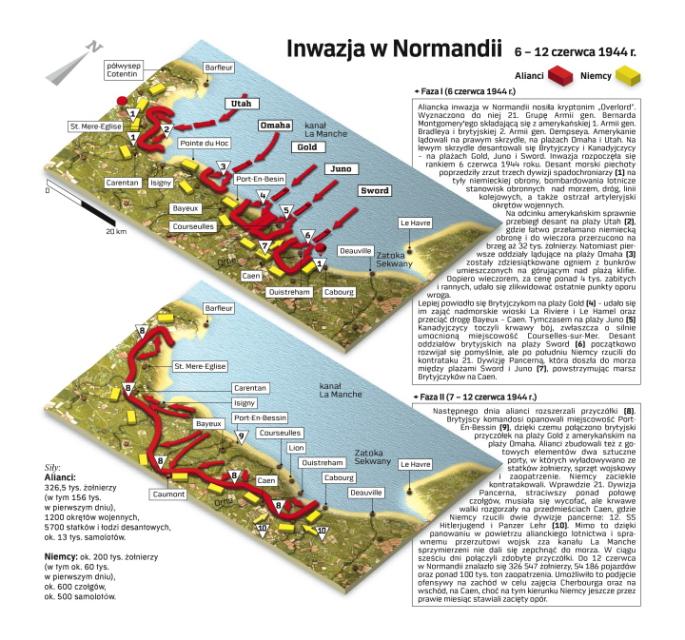
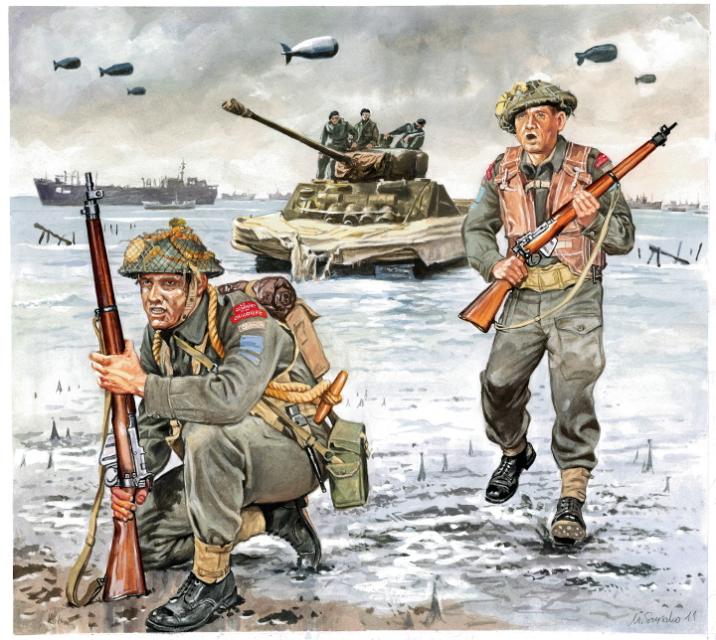
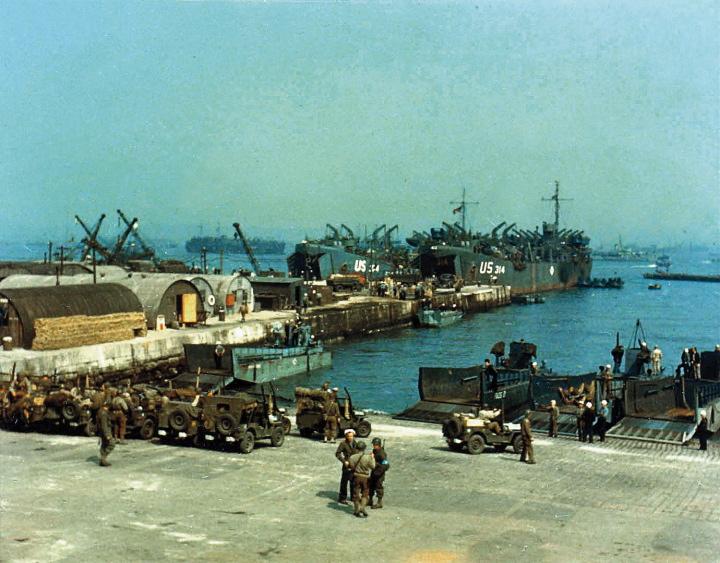
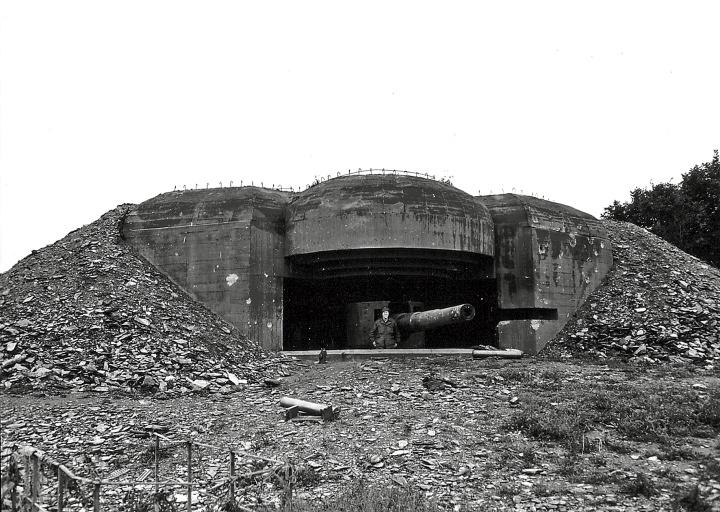
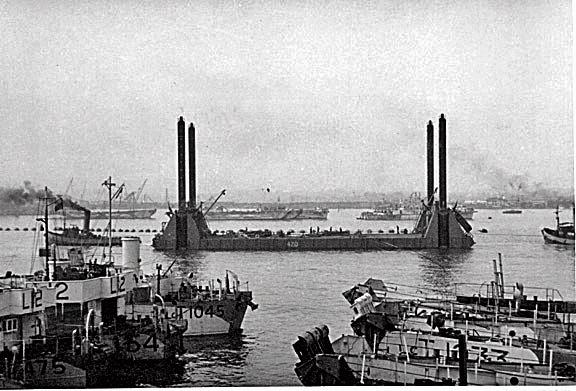
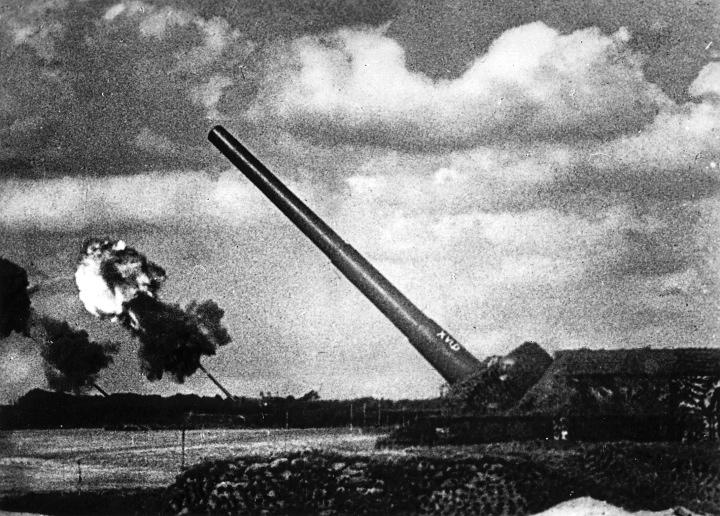
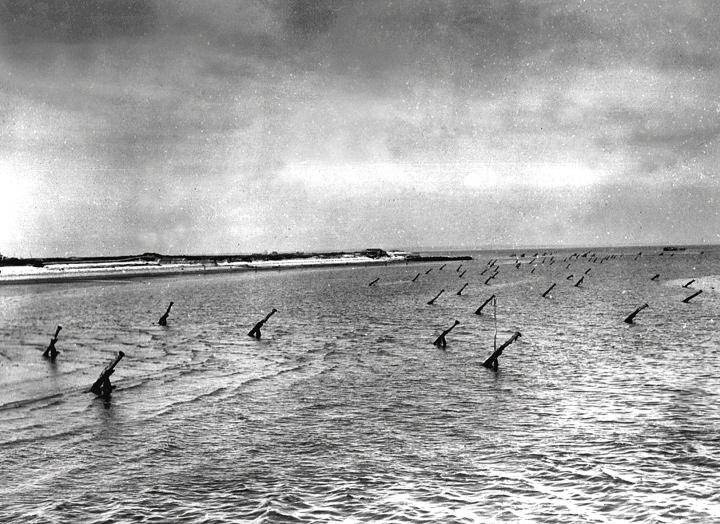
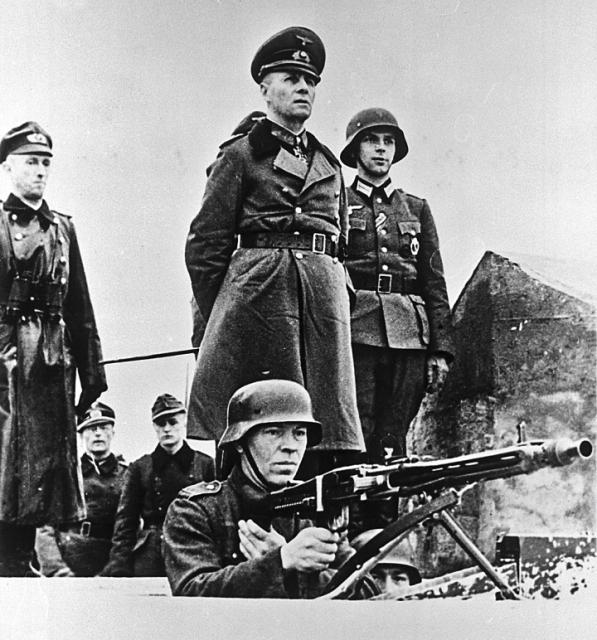
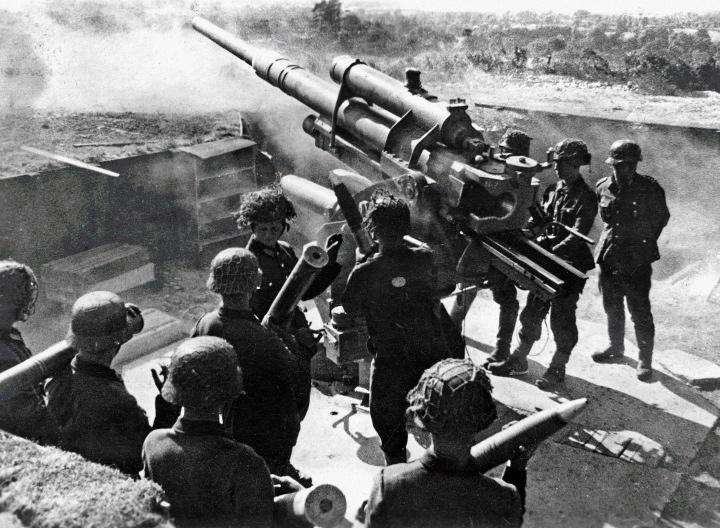
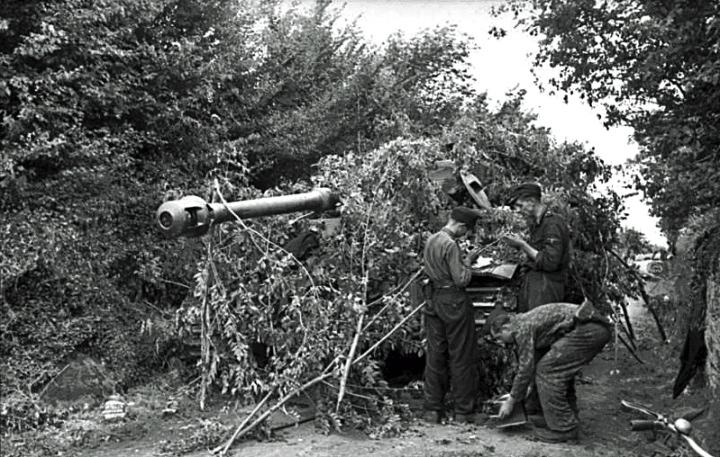

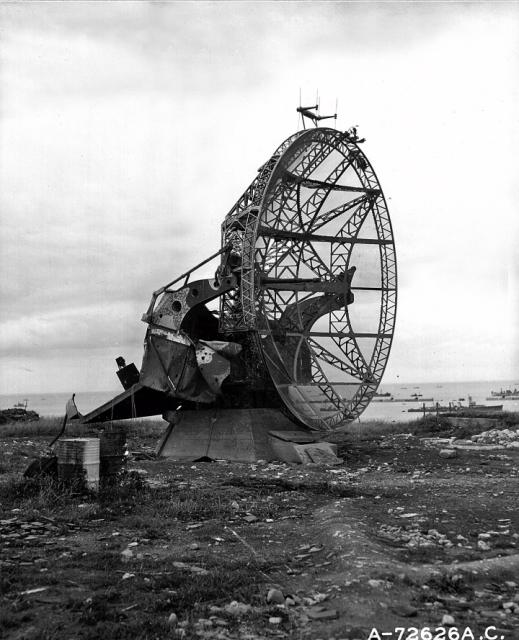
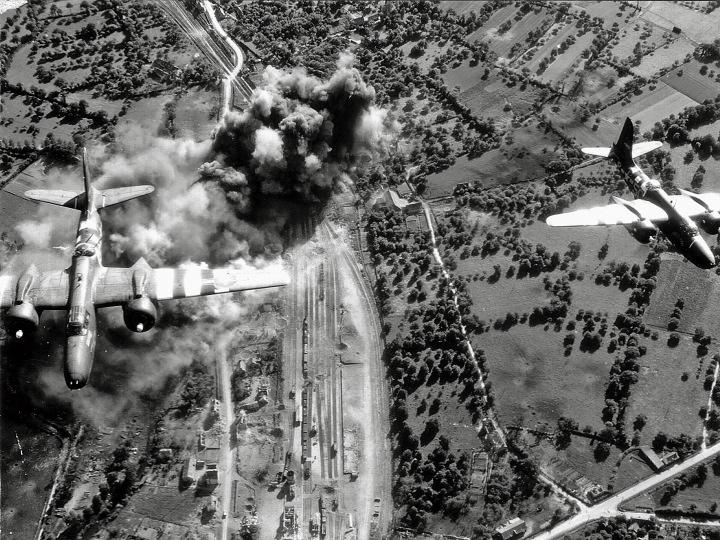

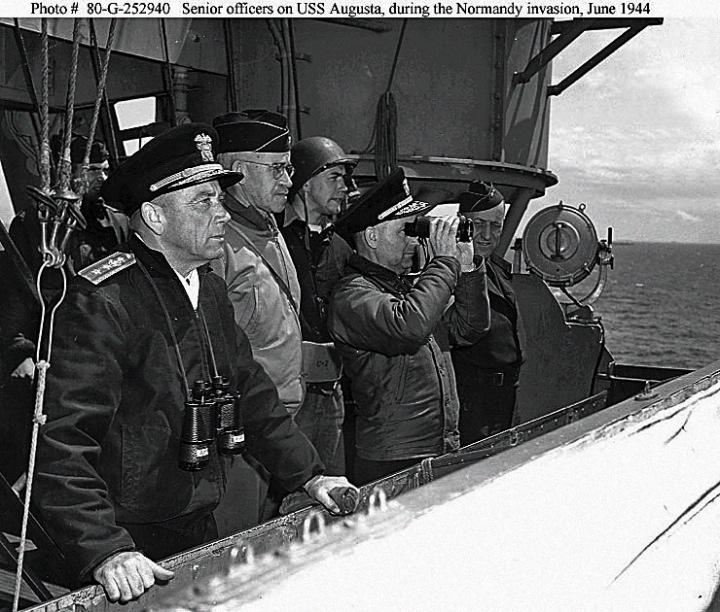
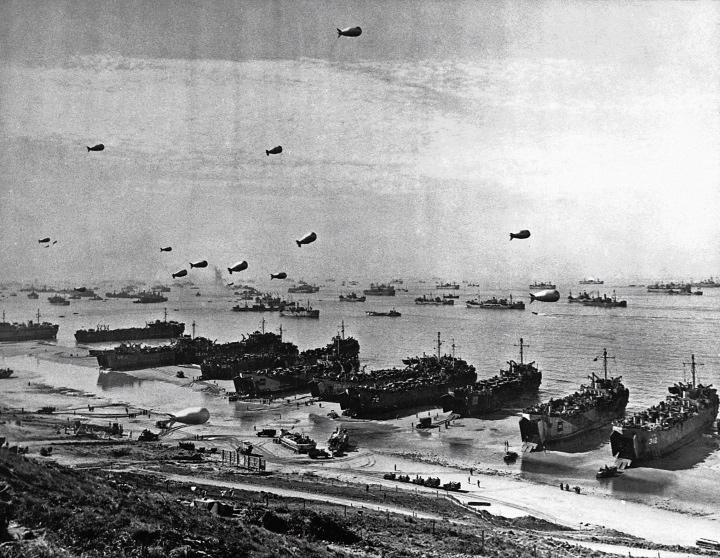
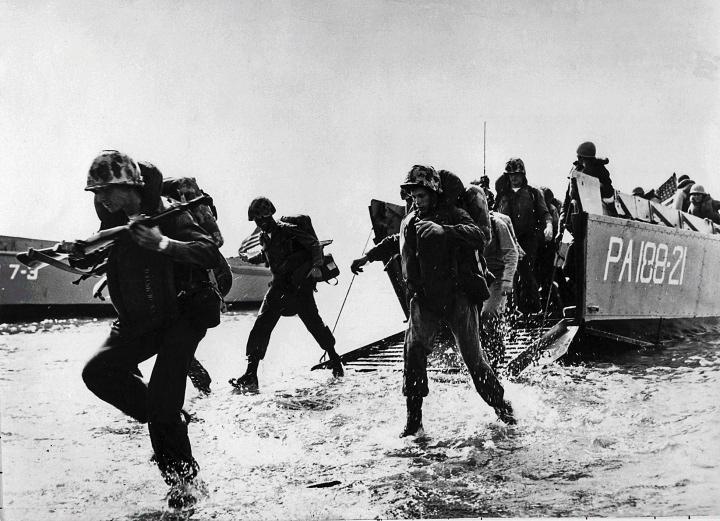
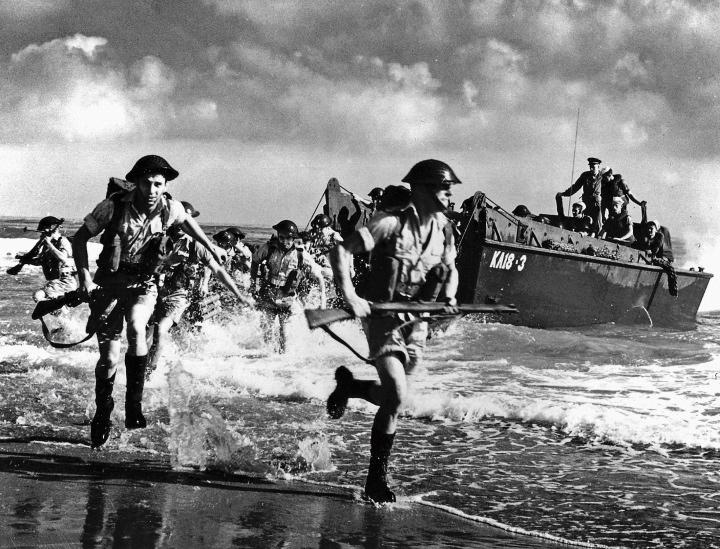
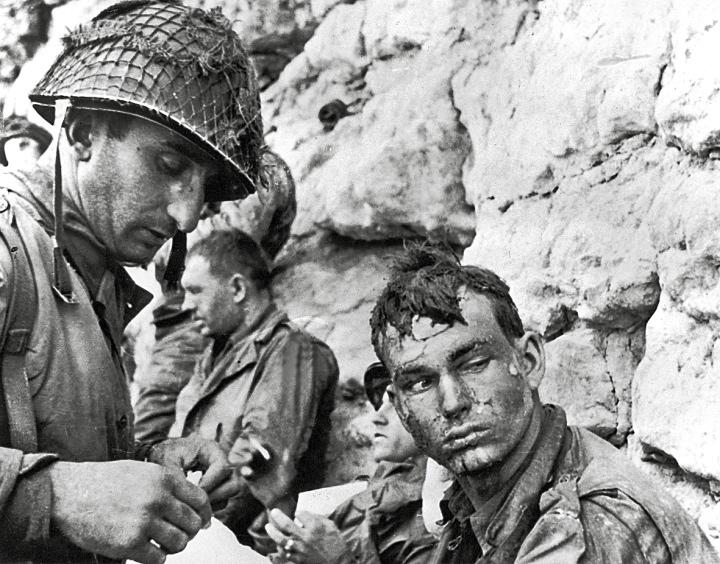
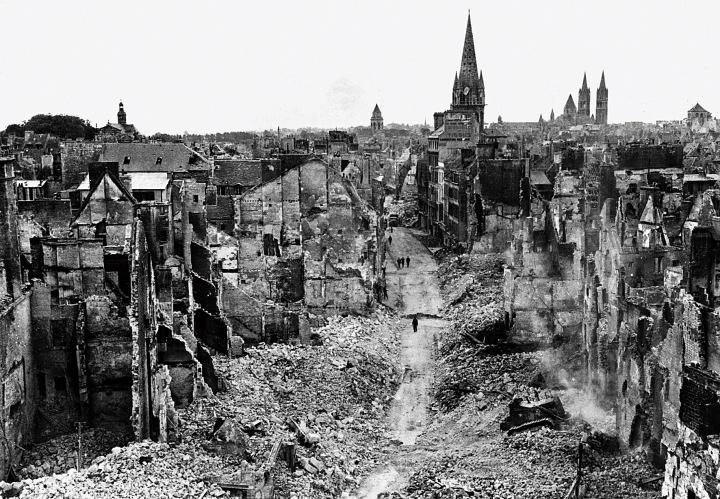
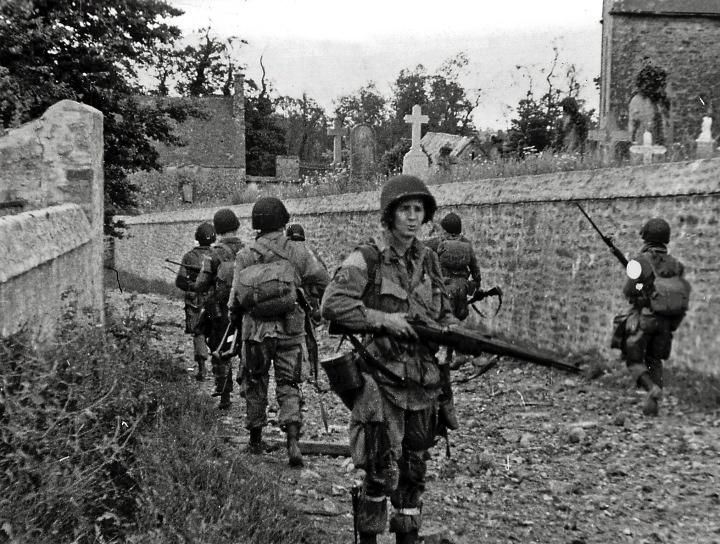

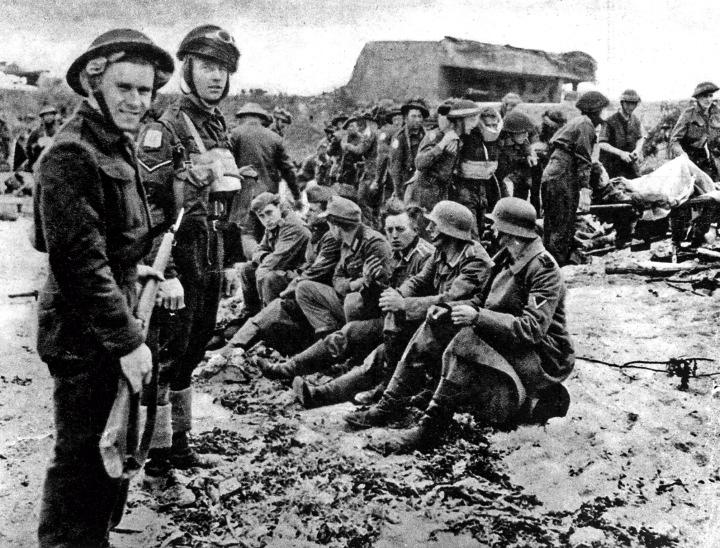
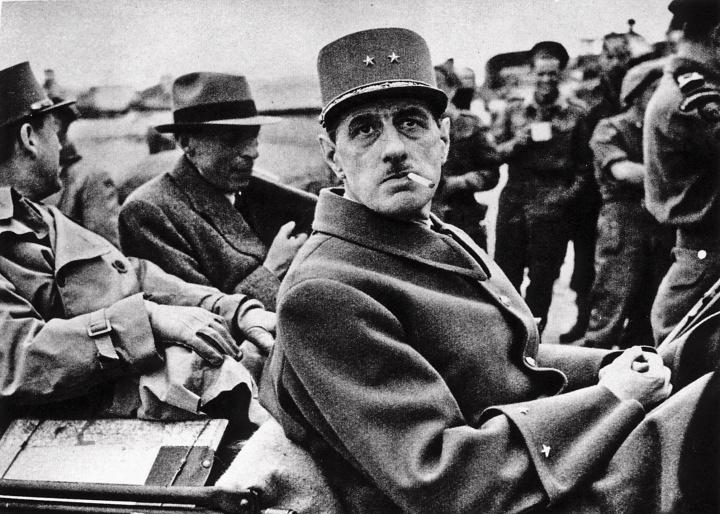
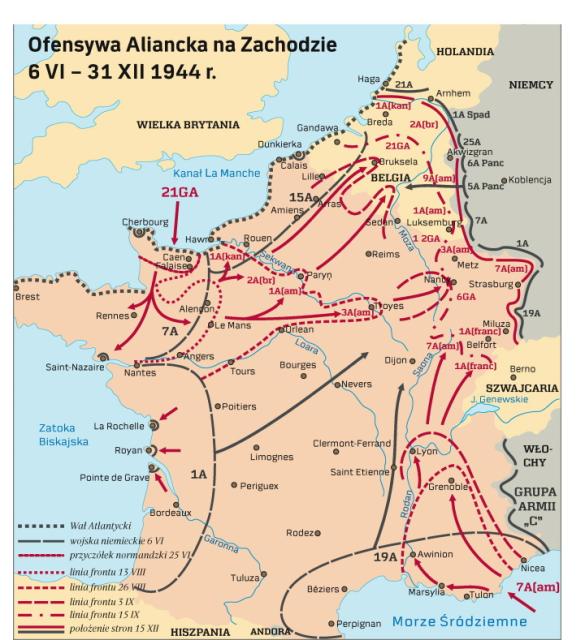
No comments:
Post a Comment